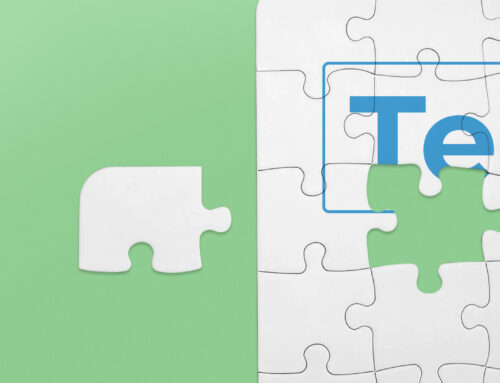This DISC behavioural style tip from The DISC Group is all about people with the D Style – the Dominance style. Read on to learn the strengths, limitations, behaviours, and growth areas for people with this profile.
About the Dominance style
The Dominance or Type D personality style is the first of the four DISC behavioural styles. Compared to the other types of personality (Influence, Steadiness, and Compliance), a high D personality style has some distinct features.
People with the D profile are ambitious and competitive, taking action to shape the environment they are in. They like looking at the bigger picture, striving for accomplishments, and rising to challenges.
Here are the strengths, limitations, and growth opportunities for this DISC profile type.
Strengths of the D style
Dominance style individuals often prefer strong directive management and operational tendencies. They tend to work quickly and impressively by themselves. They try to shape their environments to overcome obstacles en route to their accomplishments. They demand maximum freedom to manage themselves and others, using their leadership skills to become winners. Additionally, Dominance styles often have good administration and delegation skills. This matches their motivating needs. In fact, if they could delegate their exercise regimens or visits to the dentist’s office, they probably would!
These assertive types tend to appear cool, independent, and competitive. They opt for measurable results, including their own personal worth, as determined by individual track records. Of all the behavioural types, they like and initiate changes the most. We symbolise this personality type as a leader, an authority. At the very least, they may have the inner desires to be #1, the star, or the chief… in control!
Limitations of the D style
Less positive Dominance Style components include stubbornness, impatience, and toughness. Naturally preferring to take control of others, they may have a low tolerance for the feelings, attitudes, and perceived ‘inadequacies’ of co-workers, subordinates, friends and family. This means that they might struggle to listen to the perspectives and ideas of others, instead preferring to solve problems and make decisions on their own.
Another limitation that is common among people with the D personality style is the sense of urgency that they work with. While working quickly isn’t necessarily a bad thing (and in many situations is beneficial), this urgency can lead to them criticising team members who don’t share their pace, creating unnecessary amounts of stress for their colleagues. Moreover, D personalities tend to display impatience for detail-oriented work or people because of their focus on the bigger picture.
Personality growth opportunities for D style individuals
Personality growth opportunities for D types include practising listening to other people and considering their perspectives before making decisions, as well as being more patient with other team members’ lack of urgency.
In a leadership position, Dominance personality types need to make an effort to build relationships with their subordinates and see value in their ideas. Because D personalities can be authoritative and quick to criticise, they must be careful that their leadership is not too forceful and that the team they lead is given sufficient opportunity to speak up or share their ideas.
For D types working with I types
While directness and assertiveness can be considered strengths of people with the Dominance DISC profile, they must be careful that these traits do not hurt the feelings of other types. They must be especially careful with coworkers who demonstrate the Influence personality type, because these people-driven individuals are especially sensitive to feeling unappreciated or criticised by others. When communicating with I types, D types need to be careful to provide the appreciation and recognition that these people-first individuals crave.
In team settings, D types and I types can work very effectively together, with the D type driving progress towards goals while the I type uses their people-first skills to motivate and enthuse the team.
For D types working with S types
Dominance and Steadiness are very different personality types: while D types value power, control, change, and individual decisiveness, S types prefer teamwork, security, and certainty in the status quo. This doesn’t mean that people with the Dominance personality trait cannot work effectively with Steadiness personalities – in fact, the two personalities can complement each other perfectly.
When interacting with people with the Steadiness style, D types need to be aware that these reliable and trustworthy individuals are great team workers who perform best when working with others. Their patience and desire to keep everyone happy means that they might not speak up with good points or criticisms, so D types need to ensure that S types get the opportunity to share their perspectives. While high D types love change and innovation, they need to be aware that change can be uncomfortable for S types, so they should be careful to introduce change carefully with warning to their team members.
For D types working with C types
People with the Compliance personality profile are organised, detail-oriented, and good at critical thinking, although their need to do extensive research before making decisions may frustrate risk-taking, solution-oriented D types. People with the Dominance profile need to be patient with C types, acknowledging the value in their highly accurate and consistent work, while helping them overcome their perfectionist tendencies.
While people with Dominance personality profiles may struggle to see the value in C types’ careful and fact-checking work style, the two types are unified in their ability to work independently and achieve great results. A team heavy in C types and D types may struggle to work together effectively because of these independent tendencies, so it’s useful to balance these teams with S and I style individuals.
For D types working with other D types
Sometimes D types will sometimes find themselves working with other individuals with the Dominance style. A team with healthy levels of competition between the hard-working and goal-focused D types can yield amazing results. However, D types need to be careful to collaborate with rather than challenge each other, allowing different people to take the lead. The assertiveness and directness of the D style personality means that conflict can sometimes break out, so it’s essential that these individuals make sure they are communicating and collaborating effectively.
Conclusion
D-type personalities are crucial to any organisation. They have many strengths that make them effective and action-oriented workers. However, some of their behaviours can hold them and their team members back, so it’s essential that type D people recognise the importance of listening to other peoples’ perspectives. With this growth area in mind, people with the Dominance DISC type can become more effective in their careers.
Want to learn more about the different DISC personality types? Read about the strengths and limitations of the Influence, Steadiness, and Compliance styles.
To learn more about your own DISC profile – and those of the people you work with – and how you can use that knowledge to build better working relationships, contact DISC Group today.
You can also call Disc Group at 0203195 2898 or email the team at sales@thediscgroup.co.uk.





